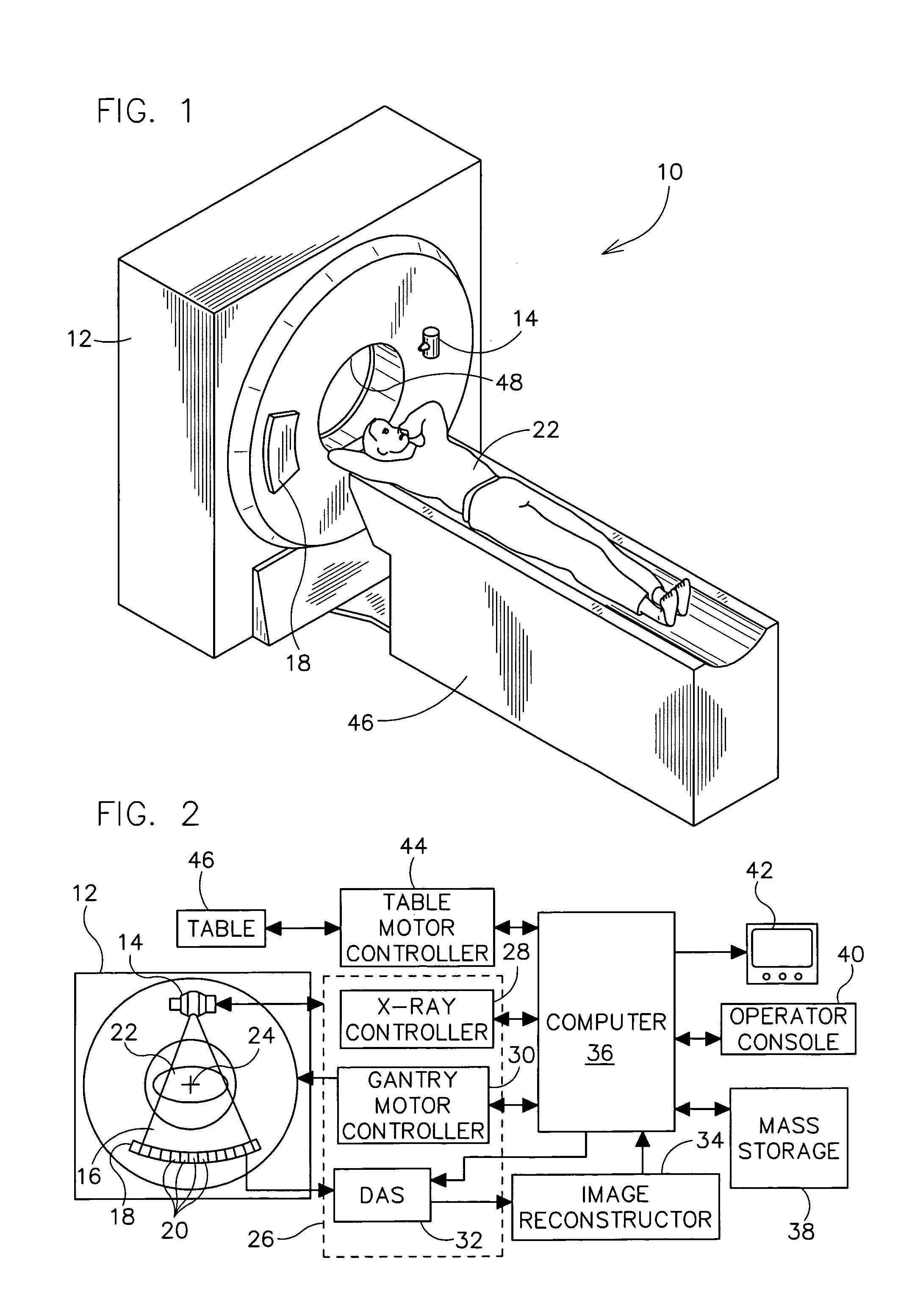Method and apparatus for thermal management of CT electronics
a technology of thermal management and electronics, applied in the field of computed tomography (ct) imaging systems, can solve the problems of difficult cooling of electronics, difficult direct convective cooling, and inability to meet the needs of the user, so as to reduce the inherent conductive coupling, reduce the local shielding of electronics, and achieve effective electronics cooling
- Summary
- Abstract
- Description
- Claims
- Application Information
AI Technical Summary
Benefits of technology
Problems solved by technology
Method used
Image
Examples
Embodiment Construction
[0032]Referring now to the drawings in detail wherein like-numbered elements correspond to like elements throughout, FIGS. 1 and 2 show a multi-slice scanning computed tomography (CT) imaging system 10. The CT imaging system 10 is shown as including a gantry 12 representative of a “third generation” CT imaging system. Gantry 12 has an X-ray source 14 that projects a beam of X-rays 16 toward a detector array 18 on the opposite side of gantry 12. Detector array 18 is formed by a plurality of detector rows (not shown) including a plurality of detector elements 20 which together sense the projected X-rays that pass through an object, such as a medical patient 22. Each detector element 20 produces an electrical signal that represents the intensity of an impinging X-ray beam and hence the attenuation of the beam as it passes through object or patient 22. During a scan to acquire X-ray projection data, gantry 12 and the components mounted thereon rotate about a center of rotation 24. FIG. ...
PUM
 Login to View More
Login to View More Abstract
Description
Claims
Application Information
 Login to View More
Login to View More - R&D
- Intellectual Property
- Life Sciences
- Materials
- Tech Scout
- Unparalleled Data Quality
- Higher Quality Content
- 60% Fewer Hallucinations
Browse by: Latest US Patents, China's latest patents, Technical Efficacy Thesaurus, Application Domain, Technology Topic, Popular Technical Reports.
© 2025 PatSnap. All rights reserved.Legal|Privacy policy|Modern Slavery Act Transparency Statement|Sitemap|About US| Contact US: help@patsnap.com



